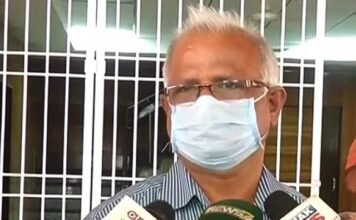Puri: The appearance of lakhs of Red Ghost crabs along the coastline in Puri district and Chilika Muhana (confluence) in Ganjam district has generated curiosity among the environmentalists in the state. The State Forest department, however, maintains that there is nothing unusual about these marine species which are generally found in these areas.
“The Red Ghost crabs are usually found in Muhana areas like Ramachandi Muhana, Debi Muhana and Keluni Muhana in Puri district with the Debi Muhana being their most favoured destination. In Odisha, these species are found abundantly at the Talasari confluence in Balasore district. Apart from this, we have 13 onshore camps between Debi Muhana and Chilika Muhana for daily monitoring of these marine species. As per the information we have received from these camps, there is nothing unusual about the appearance of these species in these areas this year,” Chittaranjan Kumar Mishra, DFO Puri Wildlife Division, told the media on Wednesday.
He said the Forest department has taken steps for the protection of these crabs, the scientific name of which is Ocypode Macrocera, originating in the Christmas Island in Australia.
Asked about the appearance of Red Ghost crabs in such large numbers, Dr Laxman Nayak, Prof and Head of the Department of Oceanography, Berhampur University, said these crabs are not only found along the Odisha coast, but also along the sandy shores in tropical and sub-tropical areas.
“In fact, there are some categories of marine species like these Red Ghost crabs, which can sense the approach of natural calamities like earthquake or tsunami and move out in large groups,” Prof Nayak said.
It may be mentioned that the State Forest department has taken steps to save the Red Ghost Crab species and prepared an action plan for inclusion of this rare species in Schedule IV of the Wild Life Protection Act, 1972 for its conservation.
These crabs are generally active during the day and prefer to stay in the shade. They can die in the moisture-robbing heat of direct sunlight. They feed on fallen leaves, seedlings, fruits and flowers, recycling nutrients and helping determine the spread and composition of native flora. These crabs are mostly the solitary dwellers of the burrows they dig throughout the forest. During the dry season, they retreat into these shelters to retain body humidity and essentially remain there for two to three months.


























